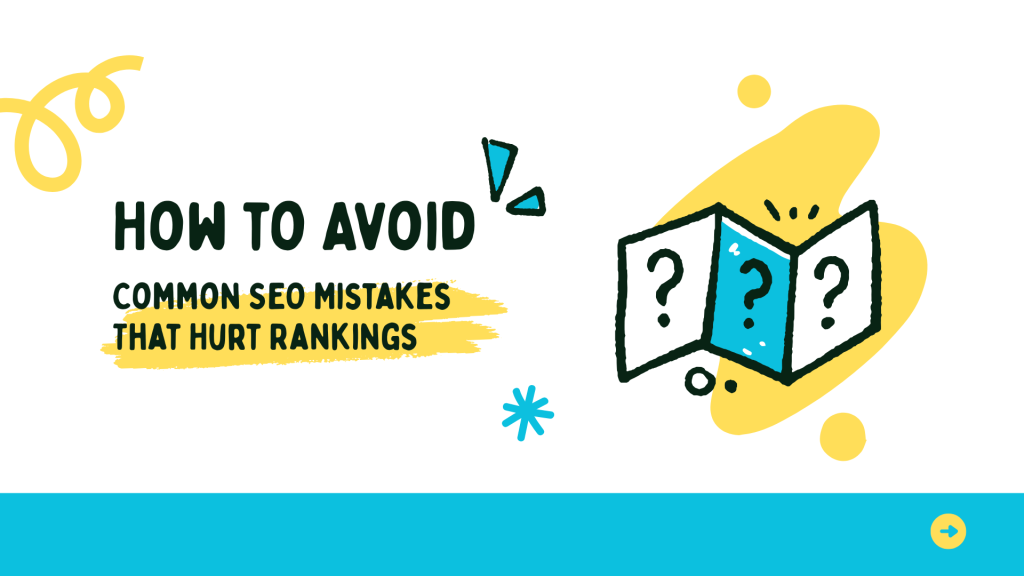
In the competitive world of digital marketing, even seasoned writers and consultants can fall into traps that sabotage their SEO efforts. Whether you’re crafting blog posts, service pages, or product descriptions, avoiding these common SEO mistakes is essential for ranking, engagement, and conversions.
This guide breaks down the most frequent pitfalls and offers actionable solutions—aligned with EEAT principles and optimized for Google’s AI Overview and SGE.
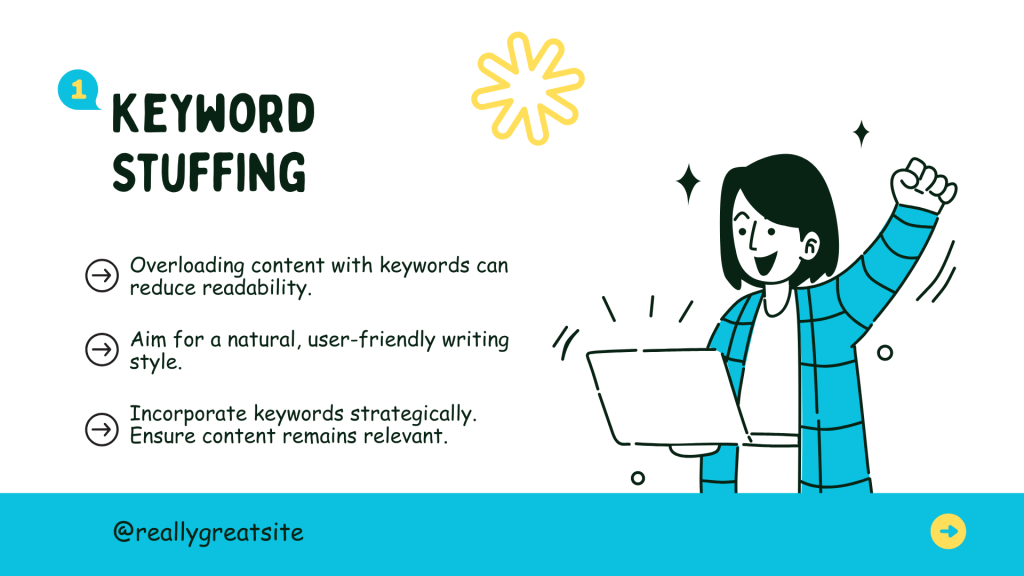
1. Keyword Stuffing & Over-Optimization
The Mistake:
Repeating the same keyword unnaturally throughout your content in hopes of ranking higher.
Why It Hurts:
- Makes content awkward and unreadable
- Triggers Google’s spam filters
- Reduces trust and increases bounce rate
How to Avoid It:
- Use your primary keyword naturally in the H1, first 100 words, and one H2
- Sprinkle LSI and semantic keywords throughout
- Focus on readability and flow
- Use tools like Rank Math or Yoast to monitor keyword density
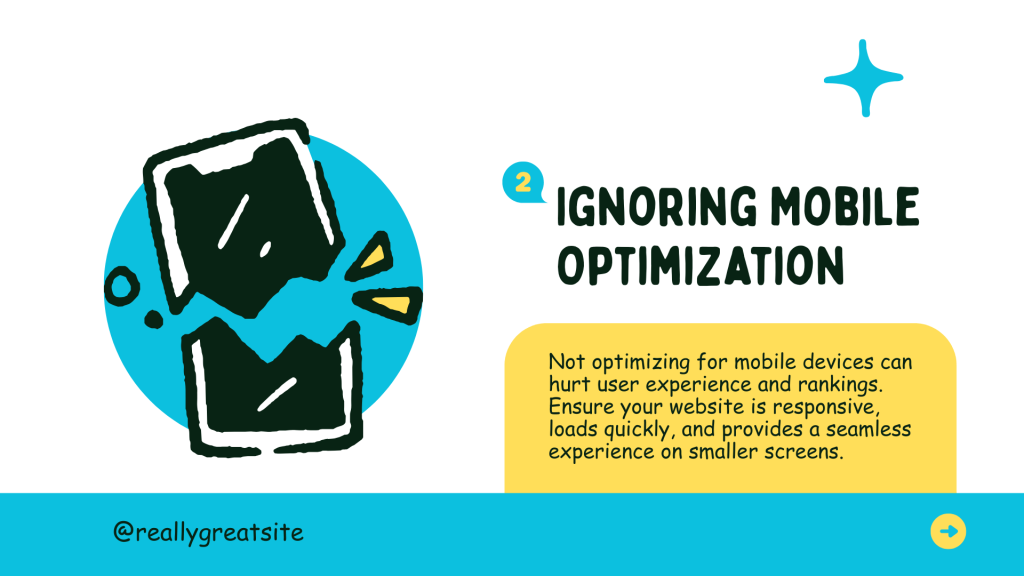
2. Ignoring Search Intent Is The Common SEO Mistakes
The Mistake:
Writing content that doesn’t match what users are actually looking for.
Why It Hurts:
- High bounce rates
- Poor engagement
- Missed conversion opportunities
How to Avoid It:
- Analyze the SERP before writing
- Identify whether the keyword is informational, transactional, commercial, or navigational
- Match your content format to the intent (e.g., blog post for “how to,” product page for “buy”)
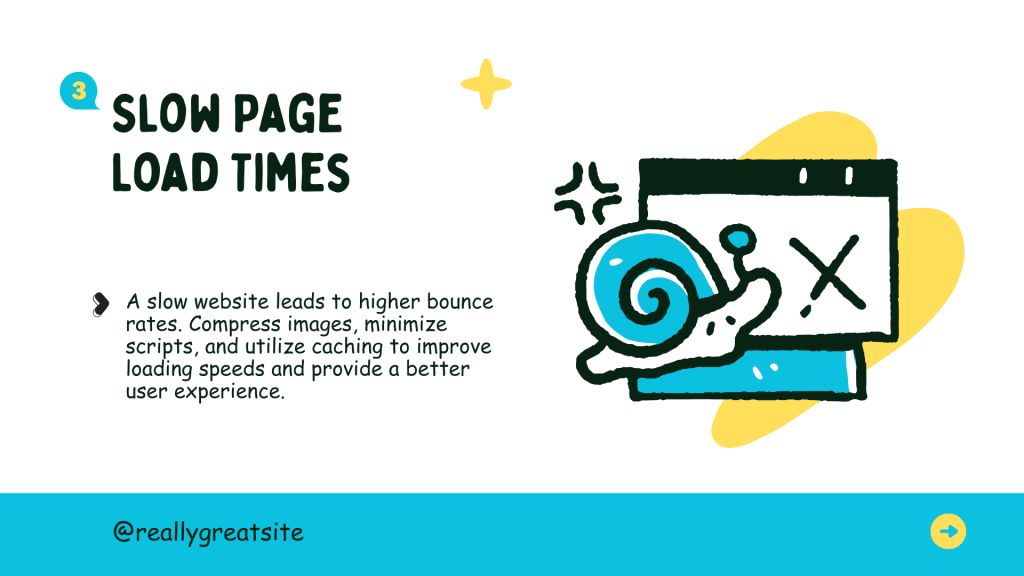
3. Creating Thin or Shallow Content is the Common SEO Mistakes
The Mistake:
Publishing content with little substance or value.
Why It Hurts:
- Google favors comprehensive, helpful content
- Thin pages rarely rank or earn backlinks
- Damages your site’s authority
How to Avoid It:
- Aim for 1000+ words for most blog posts
- Include examples, visuals, and data
- Cover related subtopics and FAQs
- Use topic clusters to build depth
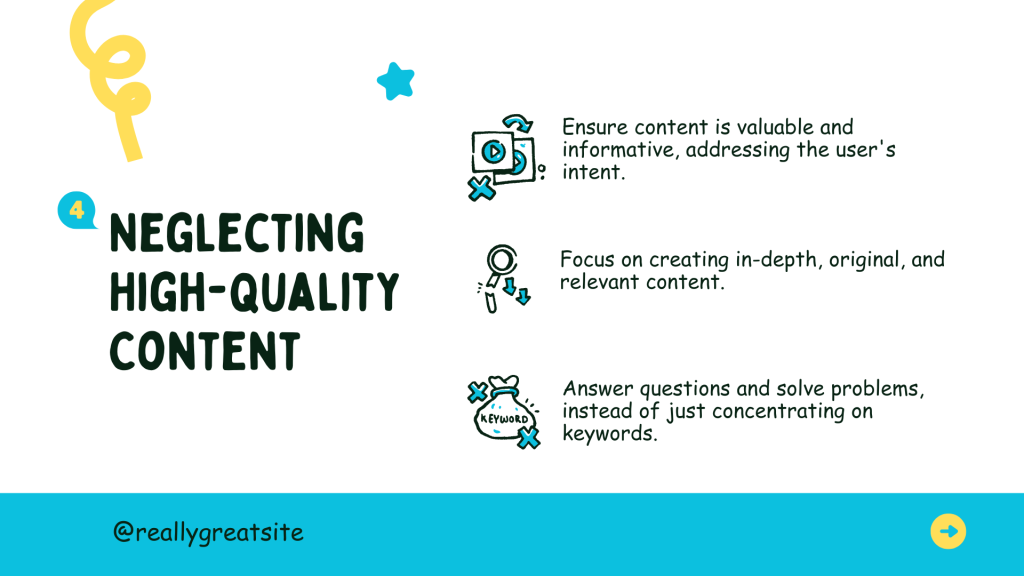
4. Poor Readability & Structure Is The Common SEO Mistakes
The Mistake:
Long paragraphs, no headings, and cluttered formatting.
Why It Hurts Common SEO Mistakes:
- Users skim—dense blocks drive them away
- Reduces time-on-page and engagement
- Google’s algorithms favor scannable content
How to Avoid It:
- Use short paragraphs (2–4 lines)
- Break content with H2s, H3s, and bullet points
- Highlight key info with bold or italics
- Apply AIDA or PAS frameworks for flow
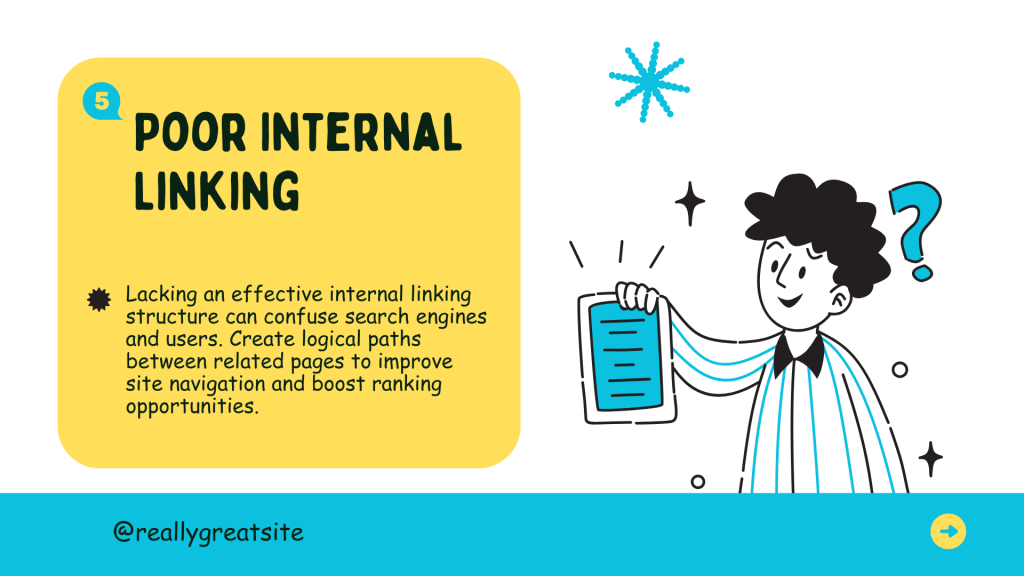
5. Neglecting Meta Titles & Descriptions is the Most Common SEO Mistakes
The Mistake:
Skipping or poorly writing meta tags.
Why It Hurts:
- Low click-through rates
- Missed keyword opportunities
- Google may auto-generate irrelevant snippets
How to Avoid Common SEO Mistakes:
- Write unique meta titles (50–60 characters)
- Craft compelling meta descriptions (150–160 characters)
- Include primary keywords naturally
- Preview with tools like SERPsim or Yoast
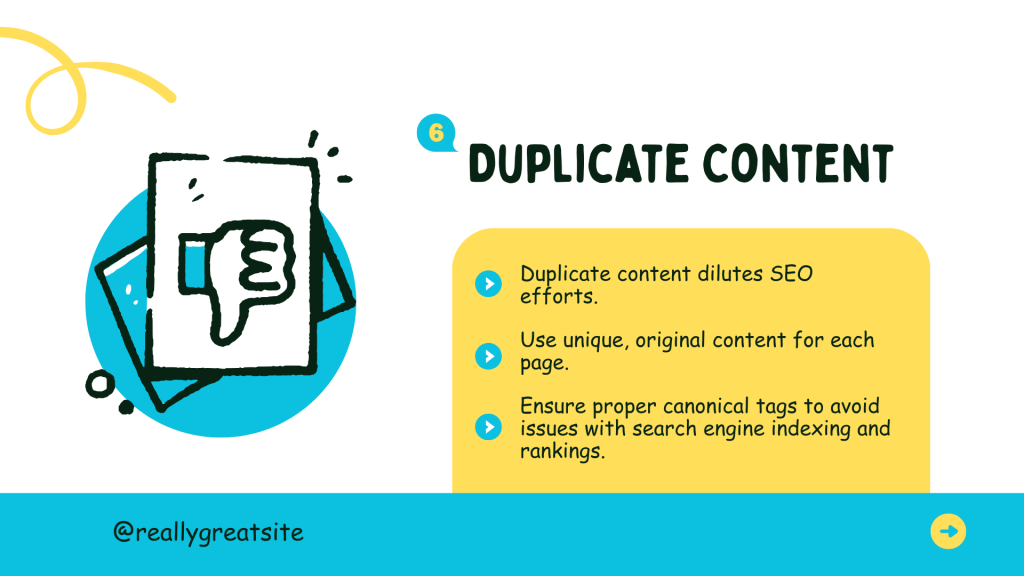
6. Unoptimized Images & Multimedia
The Mistake:
Uploading images without alt text, compression, or proper naming
Why It Hurts:
- Slows down page speed
- Misses SEO signals from image search
- Reduces accessibility
How to Avoid It:
- Use descriptive filenames (e.g., seo-checklist-2025.png)
- Add keyword-rich alt text
- Compress images with TinyPNG or ShortPixel
- Use WebP format for faster loading
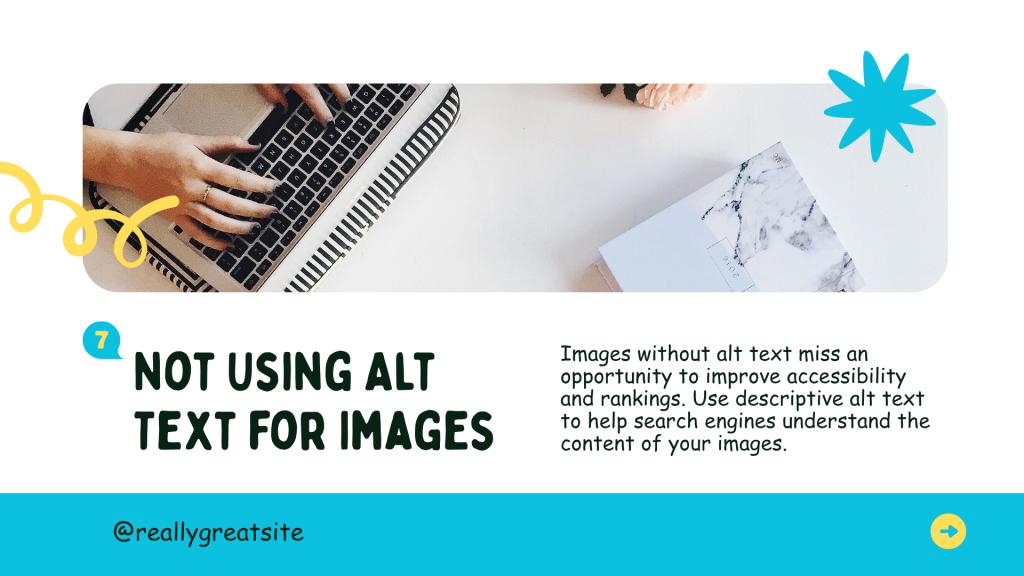
7. Not Updating Content Regularly
The Mistake:
Letting content become outdated or irrelevant.
Why It Hurts:
- Rankings drop over time
- Users lose trust in outdated info
- Missed opportunities to improve
How to Avoid It:
- Audit content every 6–12 months
- Refresh stats, links, and examples
- Expand articles with new insights or FAQs
- Redirect or remove obsolete pages
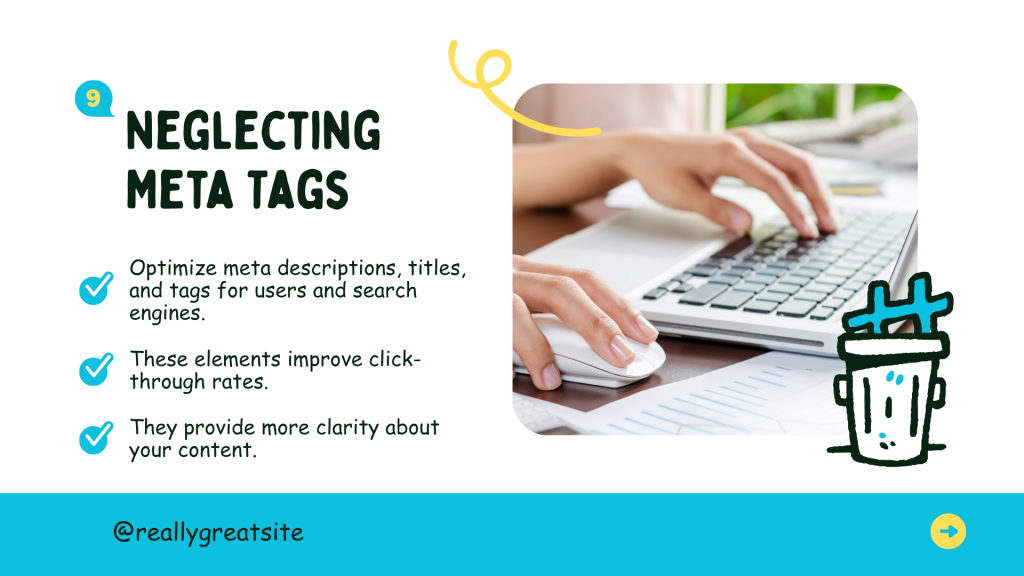
8. Forgetting EEAT Principles
The Mistake:
Publishing content without demonstrating expertise, authority, or trust.
Why It Hurts:
- Google’s AI systems prioritize EEAT-rich content
- Lack of trust signals reduces ranking potential
- Users may question credibility
How to Avoid It:
- Include author bios with credentials
- Cite reliable sources and studies
- Add contact info and HTTPS security
- Use schema markup for articles, FAQs, and reviews
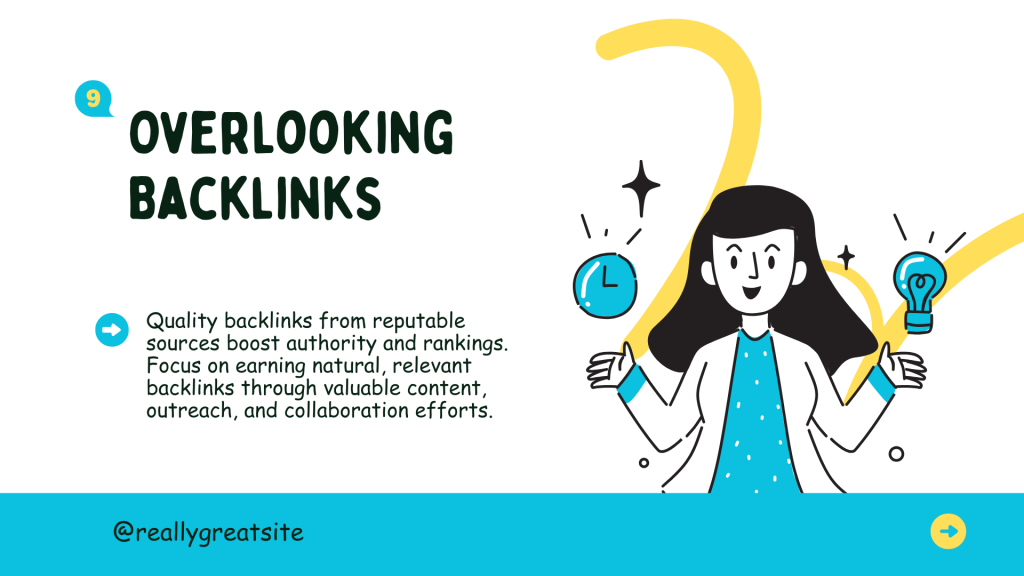
9. Skipping On-Page SEO Elements
The Mistake:
Why It Hurts:
- Google may not understand your page
- Missed opportunities for rich snippets and AI Overview
- Poor crawlability and indexing
How to Avoid It:
- Use proper H1–H3 tags
- Optimize URLs with keywords
- Add internal and external links
- Implement schema markup using tools like Merkle’s generator
10. Ignoring Mobile Optimization
The Mistake:
Why It Hurts:
- Over 60% of searches are mobile
- Google uses mobile-first indexing
- Poor UX leads to high bounce rates
How to Avoid It:
- Use responsive design
- Test with Google PageSpeed Insights
- Avoid popups and heavy scripts
- Ensure fast loading and touch-friendly layout
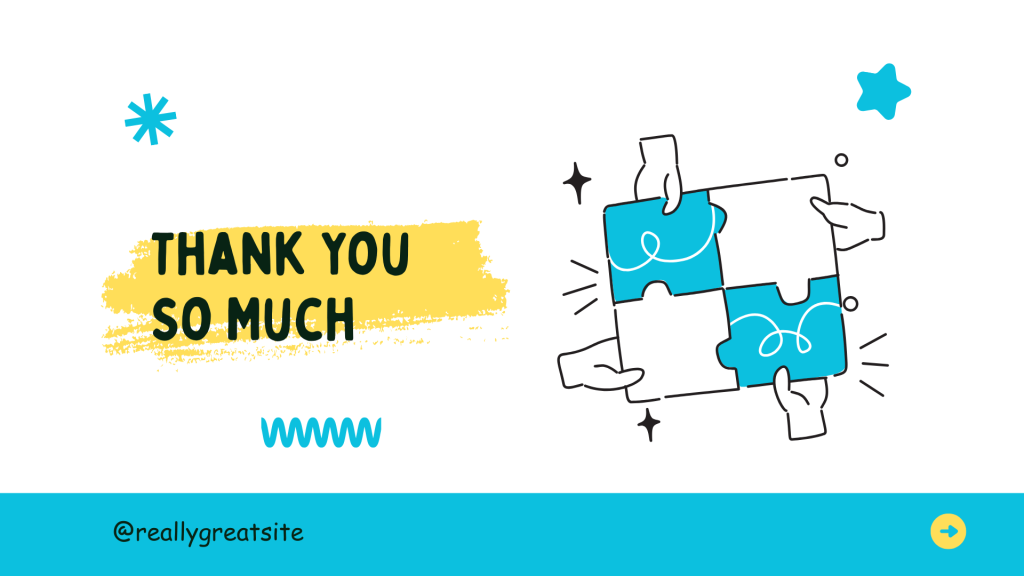
✅ Final Checklist: SEO Mistakes to Avoid
| Mistake | Fix It With… |
| Keyword Stuffing | Natural placement + semantic keywords |
| Ignoring Search Intent | SERP analysis + intent mapping |
| Thin Content | In-depth writing + visuals + FAQs |
| Poor Structure | Headings + bullets + short paragraphs |
| Weak Meta Tags | Optimized titles + compelling descriptions |
| Unoptimized Images | Alt text + compression + descriptive filenames |
| Outdated Content | Regular audits + updates |
| Missing EEAT Signals | Bios + citations + HTTPS |
| Skipped On-Page SEO | Tags + schema + internal links |
| Mobile Issues | Responsive design + fast load speed |
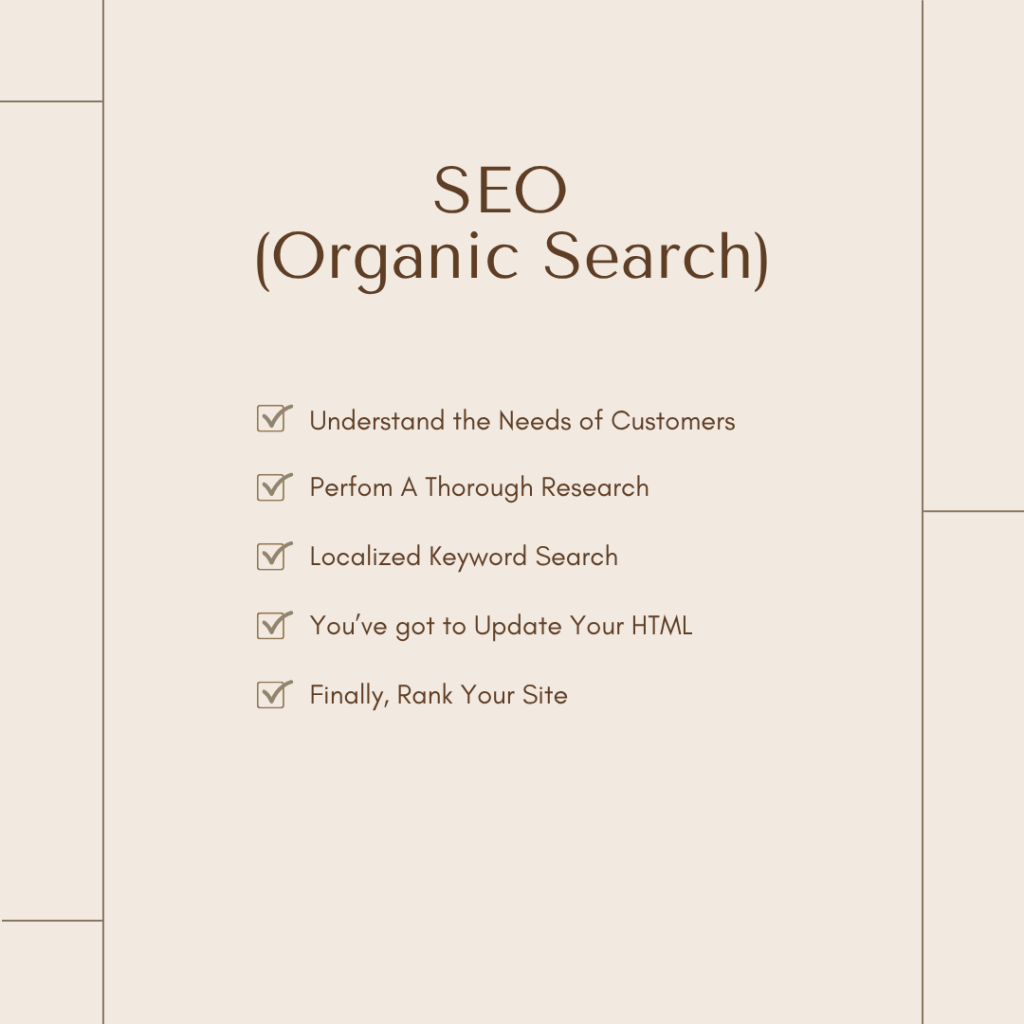
🏁 Conclusion
Avoiding these SEO mistakes isn’t just about pleasing Google—it’s about creating content that truly serves your audience. By aligning your writing with search intent, EEAT principles, and technical best practices, you’ll build trust, drive traffic, and convert visitors into loyal customers.
Want help auditing your content or optimizing your next blog post? Let’s collaborate on a mock project or build a checklist together!
